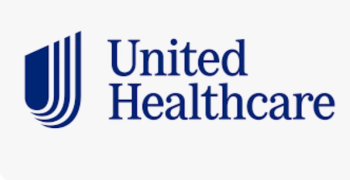
3 Ways to Reach Your Care Coordination and Communication Goals
In this second part of a two-part article series, Curtis Gattis, CEO and co-founder of LeadingReach, discusses how healthcare organizations participating in risk-based contracting or value-based financial and care delivery models are currently facing major challenges with integrating, managing and tracking care coordination and communication capabilities within provider networks.
In the first part, we discussed four ways that value-based care can achieve seamless coordination and communication. Now we’ll take a deeper dive into the benefits of implementing a solution that will increase provider networks, provide detailed metrics on what’s working and what isn’t, and how narrow networks and value chaining set practices up for success.
Phase 1: Define your network
Losing track of patients after they’ve been referred to a secondary care provider is a major problem for accountable care organizations (ACOs) and a common, recurring foundational mission for value-based organizations, making it an obvious starting point for improved care coordination and better referral management processes. Many ACOs lack the visibility to close the loop on manual, untraceable patient referrals and rely on outdated, retrospective claims data received too late to be meaningful and actionable.
This lack of insight is harmful for patient outcomes and detrimental for the success of an organization created to deliver accountable care, as you have no way of holding providers accountable when referrals don’t result in appointments. When your organization is unaware of the number of patients that fall through the cracks or don’t get the care they were prescribed, you are likely unaware of the severe impact that lack of insight has on your organization’s bottom line.
Phase 1 begins with implementing and utilizing your connected communication network to enable referring providers to track patients in real-time to ensure they’re getting the care they need. This is achieved when you have full visibility across all digital patient transitions in your network. While traditional interoperability issues arise due to differing EHR systems, an agnostic layover platform circumvents those challenges. Connected organizations can send and receive referrals digitally, coordinate care via in-platform messaging, and share documents with each other.
Phase 2: Measuring metrics on performance and outcomes scheduled
Once your value-based organization is tracking the patient referral process and identifying where your referrals are going, this phase takes your care coordination capabilities to the next level. Knowing where your patients are is important, but creating throughput metrics to measure care coordinators, care teams, receiving providers and patients is the next step in ensuring your network is delivering higher-quality, lower cost care to your patients.
Once your network has been built and are able to send and receive referrals, tracking what is happening using statuses is paramount to the success of your value-based organization. Being able to evaluate a range of insights from your platform is essential, including your referral-to-appointment ratio, referral trending or bottlenecks, referral network activity, and in-depth analysis of an organization’s metrics across the entire network.
From a cost standpoint, knowing what specialists and hospitals are within the patient’s network is of critical importance. Keeping better track of your patient pipeline benefits your PCPs as well by closing the referral loop on each patient. It also benefits specialists by improving the referral-to-appointment conversion ratio and most importantly, it benefits patients by ensuring their care is being carefully coordinated.
Phase 3: Narrow network and value chaining
In addition to establishing your tightly connected network and improving care coordination processes, ACOs and other value-based organizations must start to enforce narrow networks. As each patient is referred from one provider or service to the next, a “value chain” is created, which is a critical metric to monitor in order to keep costs in check while operating at scale.
Setting up value chaining starts with creating and mapping the providers across a series of plans. Plans are what drive the value chaining process and they are created by the central scheduling hub or parent organization. Patients referred within a designated plan help to limit the probability of referral leakage by directing referrals to stay within a specific network of preferred providers. The plan is what defines the network. Think of plans as a grouping of providers associated with something, usually a contract that depends on a patient’s PCP, employer, insurance, health system, or ACO affiliation.
With value chaining enabled, a plan must be associated with the referral before it can be sent. The plan also stays associated throughout the life of the referral, even if the referral is forwarded to multiple providers. The parent of the referral retains insight into where the referral has been forwarded to, from primary care to specialty providers to ancillary services. Referral coordinators no longer need to weed through hundreds of providers to send a referral to an appropriate provider. Within a plan, network and provider tags can be used to further define which providers or organizations are preferred. Using network and provider tags in concert with value chaining gives the referral coordinator more insight into where to appropriately route the referral.
Many value-based organizations find themselves stuck with data silos, disparate HIT systems, lack of visibility and other procedural challenges that impede their ability to deliver the highest quality care with the lowest possible cost. Refining, evolving and improving your care coordination and communication capabilities is paramount in delivering true value-based care.
Curtis Gattis is CEO and co-founder of LeadingReach, a healthcare platform and care coordination company in Austin, Texas.
Newsletter
Get the latest industry news, event updates, and more from Managed healthcare Executive.





















































